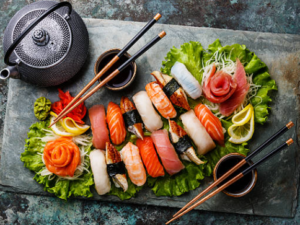Description
The Art of Stir-Frying: Techniques and Flavors
Stir-frying is a quintessential cooking technique in Chinese cuisine, renowned for its ability to deliver vibrant flavors and textures in a quick cooking process. The origins of stir-frying can be traced back to ancient China, where it evolved as a practical method for preparing meals over an open flame. This culinary approach has significant cultural relevance, symbolizing resourcefulness and efficiency, traits highly valued in Chinese culture.
The cornerstone of stir-frying is the wok, a versatile cooking vessel that allows for maximum heat retention and even distribution. A well-seasoned cast-iron or carbon-steel wok is essential for achieving the desired smoky flavor, often referred to as “wok hei.” The spatula, typically made of wood or a heat-resistant material, plays a crucial role in maneuvering ingredients within the wok without damage. Using high heat is critical, as it enables food to cook quickly while retaining essential nutrients and achieving a crisp texture.
Achieving the perfect balance of flavor and texture in stir-fried dishes requires attention to detail. Ingredients, such as vegetables and proteins, should be cut into uniform sizes to ensure even cooking. Stir-frying typically begins with the sautéing of aromatics, such as garlic and ginger, before adding proteins like chicken, beef, or tofu. The quick cooking method allows for a tantalizing flavor infusion from sauces such as soy sauce, oyster sauce, or hoisin sauce. Popular dishes include Kung Pao chicken, which combines marinated chicken with peanuts and bell peppers, and vegetable stir-fry, showcasing the freshness of seasonal produce. For both novice and experienced cooks, mastering the art of stir-frying not only enhances culinary skills but also provides an avenue to explore the rich tapestry of flavors that characterize Chinese cuisine.
Dumplings, or “jiaozi,” are a staple of Chinese cuisine, typically made from a dough filled with meat or vegetables, then boiled, steamed, or pan-fried. Their origins date back to the Han dynasty, originally served during festivals to symbolize wealth and prosperity. The diverse regional variations of dumplings—such as “shuijiao” (boiled dumplings) from Northern China and “guotie” (potstickers) from the East—illustrate the local ingredients and taste preferences that influence these delightful bites. The meticulous process of making dumplings is often a family affair, particularly during Chinese New Year, when they are crafted and consumed to usher in luck for the upcoming year.
Noodles hold a prominent place in Chinese culinary traditions, symbolizing longevity and resilience. Diverse noodle varieties abound across the nation, ranging from the thin rice noodles of Southeast Asia to the chewy wheat noodles found in Northern provinces. A notable example is the “biangbiang” noodles from Shaanxi province, characterized by their broad, hand-pulled texture. Each noodle dish is steeped in cultural significance, often enjoyed during celebrations or as part of daily meals, demonstrating the versatility and importance of this staple food in Chinese society.
Dim sum, meaning “heart’s delight,” encompasses a variety of small dishes served in steamer baskets or on small plates. Traditionally enjoyed during brunch or tea time, dim sum is not just about the food but also the shared experience of dining with family and friends. Popular offerings include “siu mai” (pork dumplings) and “har gow” (shrimp dumplings). The ritual of selecting dishes from carts wheeled around the dining room cultivates a communal atmosphere, highlighting the significance of companionship in Chinese culinary practices. With these dishes, one can engage in a practical culinary journey, recreating beloved recipes and embracing the traditions that they represent.





